Location: bottom end of Royal Mile, Edinburgh, Scotland
kind of castle: palace
today: open to public, Queen’s Gallery, royal residence
public transport: busses to Edinburgh and throughout Edinburgh
scheduled monument: the grounds are scheduled, the palace itself is not
managed by: Queen Elizabeth II, crown property
entrance fee: £ 17.50 (for adults); for all prices: Visit the Palace of Holyroodhouse (rct.uk)
opening times: April – October: 09:30-18:00; November – March: 09:30-16:30; closed on Tuesday and Wednesday and 25th and 26th of December as well as during Royal visits
directions: Holyrood Palace – Google Maps

The Palace of Holyroodhouse, which some might now as Holyrood Palace, Holyroodhouse, or Holyrood Castle, is to this day the official residence of the British monarchs in Scotland. It is connected to Edinburgh Castle by the Royal Mile, whereas Edinburgh Castle was used for military purposes Holyrood Palace was used as the principal royal residence in Scotland since the 16th century. Each summer Queen Elizabeth II stays at Holyrood Castle for a week to carry out a range of official engagements and ceremonies.
Maybe one of my personal favourite features of the palace are the apartments of Mary, Queen of Scots and the whole fact that Mary once walked through these rooms just gives me the shivers. Mary Queen of Scots is my favourite part of Scotland’s history so to write about the very place she lived at and went through so much like the murder of her secretary David Rizzio.
In the very front before the palace complex itself you can find the Queen’s Gallery which opened in 2002, including art from the Royal Collection. Surrounding the Palace are wide grounds as well as Holyrood Abbey, the grounds being referred to as Holyrood Park.

The Augustinian abbey which is now just a ruin was founded in 1128 getting its name either from a legendary vision of the cross witnessed by David I or from a relic of the True Cross known as the Holy Rood, which also gave the church of the Holy Rude in Stirling its name. It was the Abbey of Holyrood where a council of nobles met to discuss a ransom for the captive kind, William the Lion and Robert the Bruce held a parliament in 1326 before it was started to be used as a royal residence in 1329.
This connection was some sort of honoured when king David II died, he was the first royal to be buried at Holyrood in 1370. James II might be the one king that is most connected to Holyrood Abbey, he was born, crowned, married, and laid to rest there and his descendant James III married Margaret of Denmark there in 1469. Back in that time the royal residence there was not more than the abbey guesthouse which stood on the site of the present north range of the palace and in the 15th century had dedicated royal apartments.
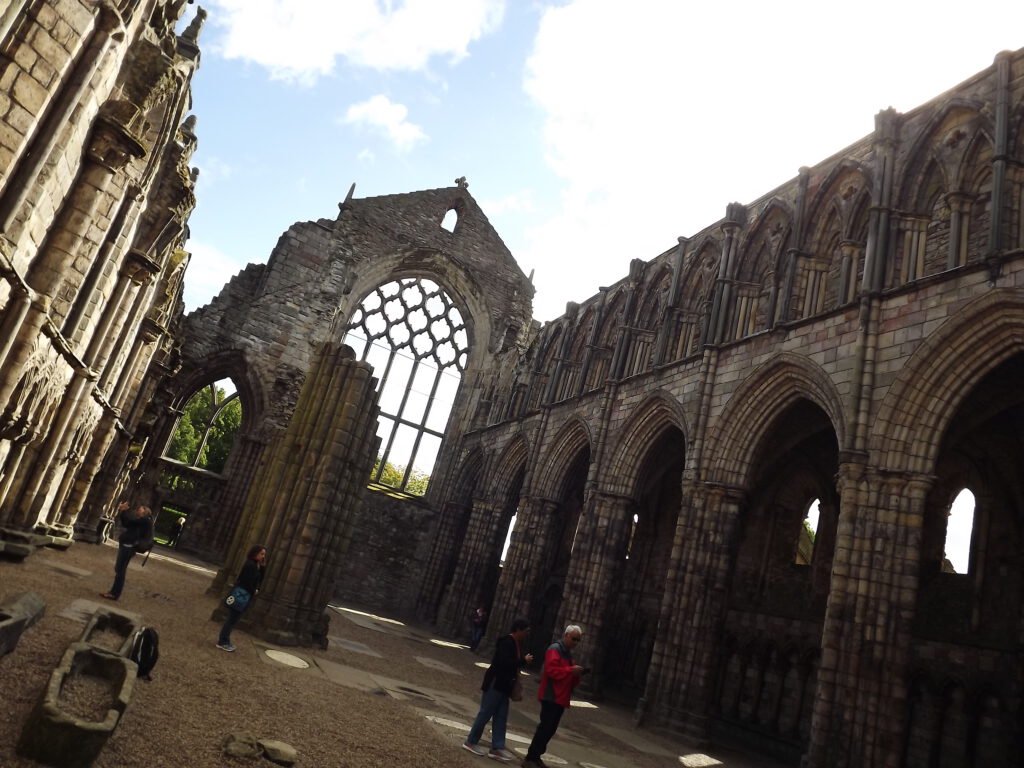
With the 16th century the Palace we see was partially build. James IV constructed a gothic palace close to the abbey between 1501 and 1505 while getting married to Margaret Tudor in August of 1503. They wed at the abbey while next to them the palace was built around a quadrangle, containing a chapel, gallery, royal apartments, as well as a great hall.
James V added to the palace, the present James V’s tower providing a high degree of security and today is the oldest surviving part of the Palace, between 1528 and 1536. The reconstruction of the south and west ranges followed.
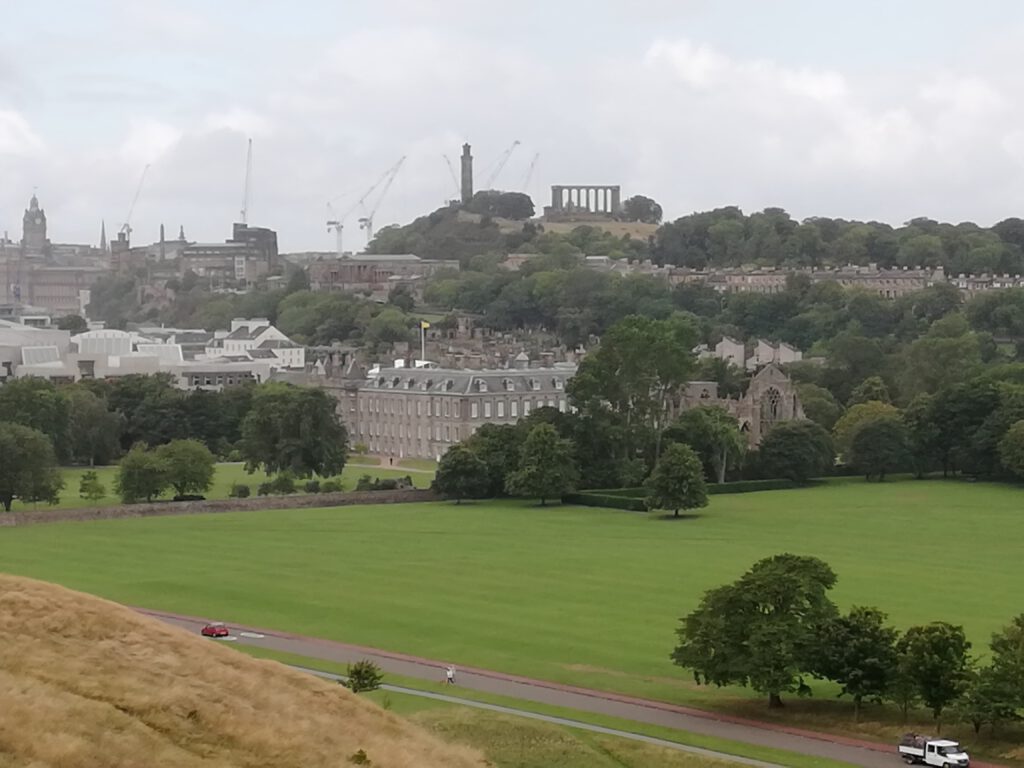
Eight years later, during the War of the Rough Wooing Holyrood was looted and burned by the Earl of Hertford after he sacked Edinburgh. Mary of Guise started repairing parts of the palace.
In the six years between her return to Scotland and her forced abdication, Mary, Queen of Scots stayed in the royal apartments in the north-west tower of the palace. Holyrood seems to have had a special part in Mary’s heart, she practiced archery there, loved to hunt deer in the park and held her famous interviews with John Knox there. Added to all this she married both of her husband’s there and it was at her private apartments that she had to witness the murder of her private secretary David Rizzio on March 9th, 1566. A bloody murder which the heavily pregnant Mary, could do nothing against, being stabbed 57 times is a bloody business and there are stories about the blood being spilled that day appears again on the wooden floor on certain occasions.
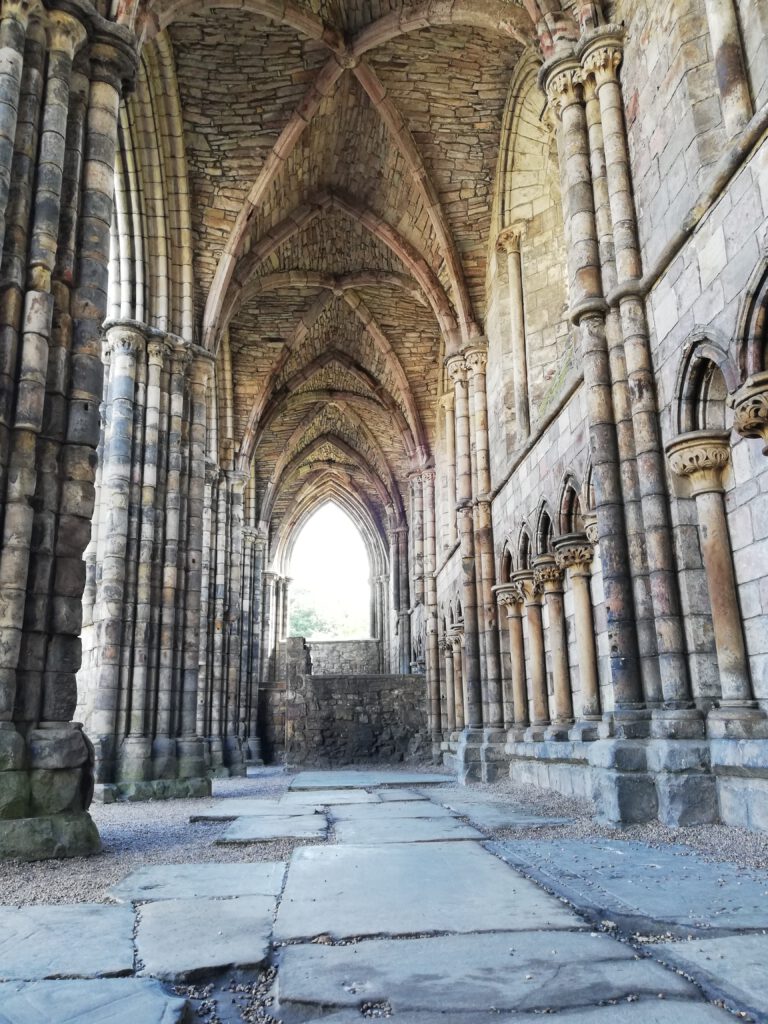
James VI lived at the palace and his wife was crowned in the church before James became King of England and moved to London in 1603.
Charles I was crowned at Holyrood Abbey as well. Following this there were a couple of restorations to reorganise the palace for its inhabitants. So mainly what can be said about the 17th century is that a lot of things were changed in the palace while the royals resided in it less and less, the restorations mainly being made for politicians residing there.
With the Union of Scotland and England in 1707 the palace lost its principal function. During the 1745 Jacobite Rising Bonnie Prince Charlie held court at Holyroodhouse Palace before the Duke of Cumberland stayed there on his way to Culloden.

George III allowed the Comte d’Artois, who was to inherit the French throne as Charles X, to stay at the Palace of Holyroodhouse before he became king and again following the July Revolution of 1830 before the king finally moved to Austria. But it was not until King George IV that a Scottish reigning monarch visited the Palace, since Charles I.Queen Victorias love for Scotland also brought her to Holyroodhouse Palace in 1871.
As mentioned before the monarchs of todays Britain still live in the palace at times and so it leaves the question as of under what conditions. Well, after a brief visit of Edward VII, George V was the king that transformed the Palace into a 20th century palace.
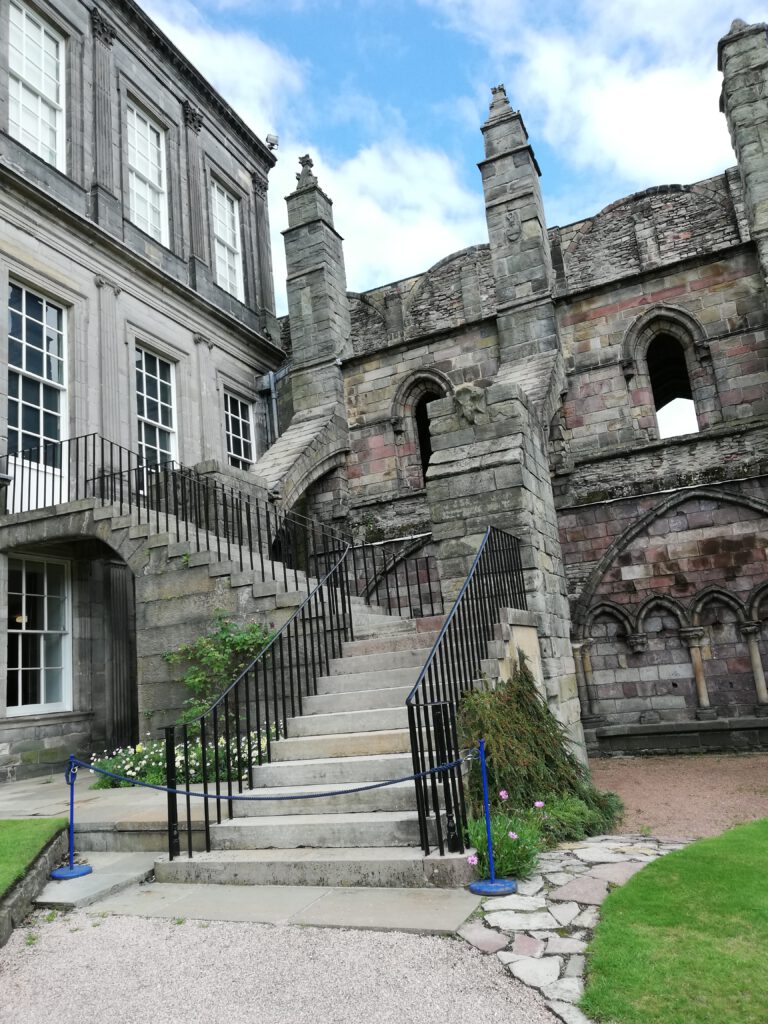
To this day the Palace is property of the Crown, used as the official royal residence in Scotland, but is cared for and managed by Historic Environment Scotland, while the public access is managed by the Royal Collection Trust.
During a dig around the grounds in 2006 archaeologists uncovered part of the cloister of Holyrood Abbey as well as a square tower associated with the 15th-century building works of James IV. However, they failed to uncover evidence of the real tennis court used by Queen Mary, which should be somewhere to the north of the palace, this mainly being because the area had been built over in the 19th century.
The Palace is definitely worth a visit, at least one. Taking photographs is prohibited in some parts of the castle but just the view of this beautiful residence is worth so much. It is full of history, full of bloody stories and intrigues, it has seen monarchs, rightful kings and queens and a great deal of officials and politicians.


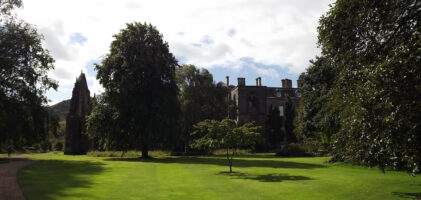
Pingback: Hopetoun House – The ancestral home of the Hope Family – A scottish World